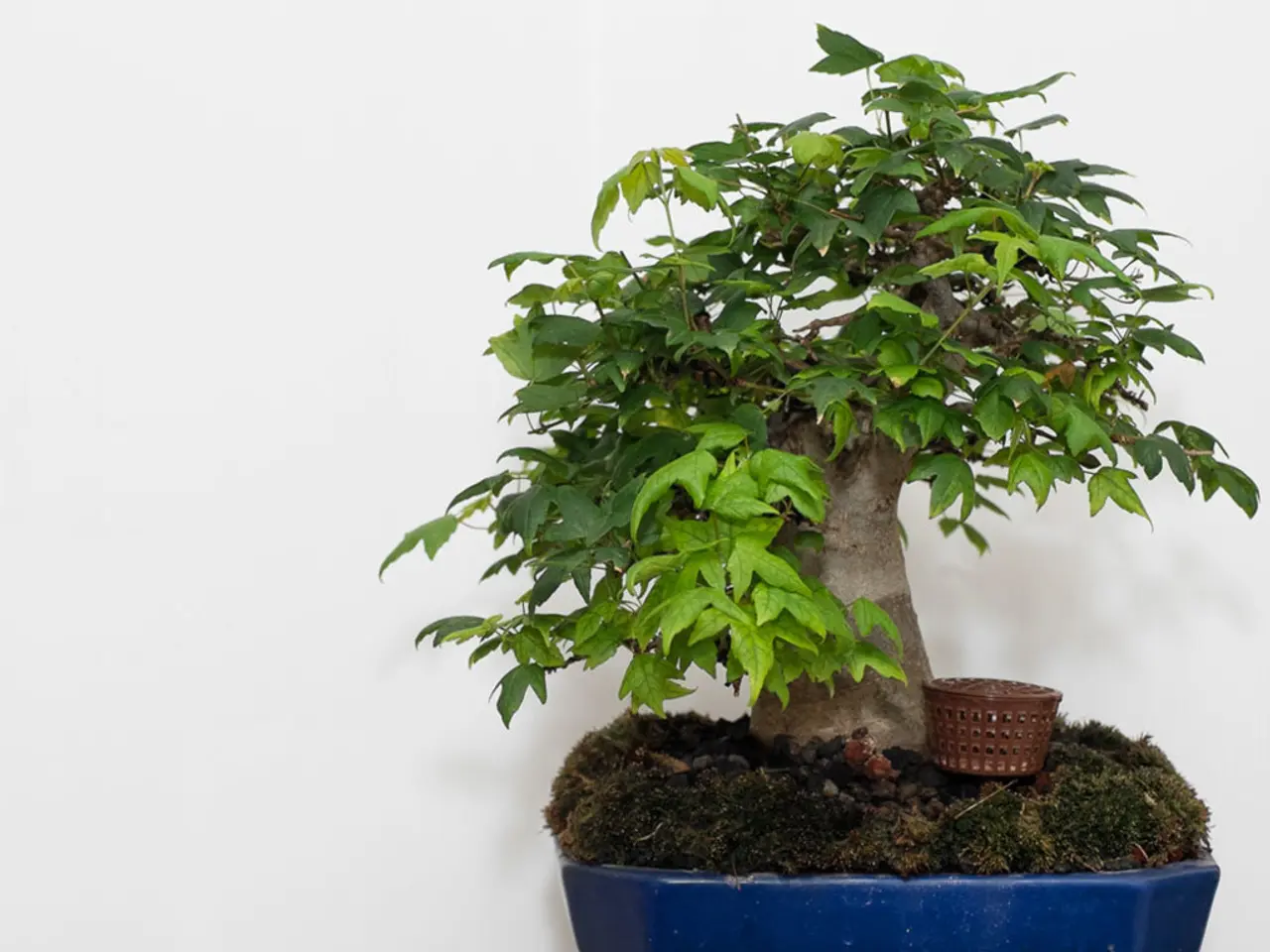The rationale behind using shallow containers for bonsai.
In the fascinating world of bonsai, the pot in which a tree is planted plays a crucial role in maintaining its miniature form and overall health. Shallow pots, in particular, are essential for bonsai cultivation.
Clay or ceramic pots, with their excellent breathability and moisture retention properties, are ideal for bonsai trees. These pots age beautifully over time, adding a touch of charm to your collection.
One of the primary benefits of shallow pots is their ability to restrict root growth. This restriction helps control the tree's size, ensuring it remains proportionate and maintains its miniature form. The limited root expansion also slows the tree's growth rate, which is essential for keeping the bonsai small.
Shallow pots require specially designed bonsai soil that provides excellent drainage and aeration. This combination helps prevent root rot and ensures roots get enough oxygen despite the limited space, maintaining the tree's health even with a reduced root system. The reduced root volume also allows the grower to regularly prune roots and shape the tree effectively.
The appropriate size and depth of a bonsai pot should be proportionate to the tree's roots, trunk, and aesthetic. Wooden containers, traditionally used in bonsai art, offer a naturalistic look and add warmth and rusticity to a collection. However, the choice of pot material can greatly impact the overall health and appearance of a bonsai tree.
Plastic pots are lightweight, durable, and provide good drainage and insulation properties. They may not offer the same visual appeal as clay or ceramic options, but they are practical for those seeking a low-maintenance solution. Porcelain or glass containers create a stunning contrast against the beauty of bonsai trees, but they are fragile and may not be suitable for all environments.
Proper drainage is essential for maintaining optimal moisture levels in bonsai trees. The number and size of drainage holes are important factors to consider. Ensure they are large enough for water to flow out freely but not so big that soil particles are flushed out as well. If a bonsai pot does not have drainage holes, they must be made before planting the tree.
A pot that is too small can restrict root growth and hinder the tree's health, while a pot that is too large may overpower the delicate beauty of the bonsai. The Bonsai World platform aims to help individuals grow and maintain beautiful bonsai trees, with resources available for beginners and those seeking to hone their skills.
When choosing a pot material, consider factors such as aesthetics, practicality, durability, and maintenance requirements, as each material has its advantages and drawbacks. With the right pot, you can help your bonsai tree thrive and create a stunning display in your home or garden.
The choice of a suitable pot material, such as clay or ceramic, can enhance the aesthetic appeal of your bonsai tree collection, complementing your home-and-garden lifestyle. The suitable pot size, however, should accommodate the tree species' root system and proportions, ensuring a balanced lifestyle for the bonsai, as a pot that is too small can hinder its growth and health.




